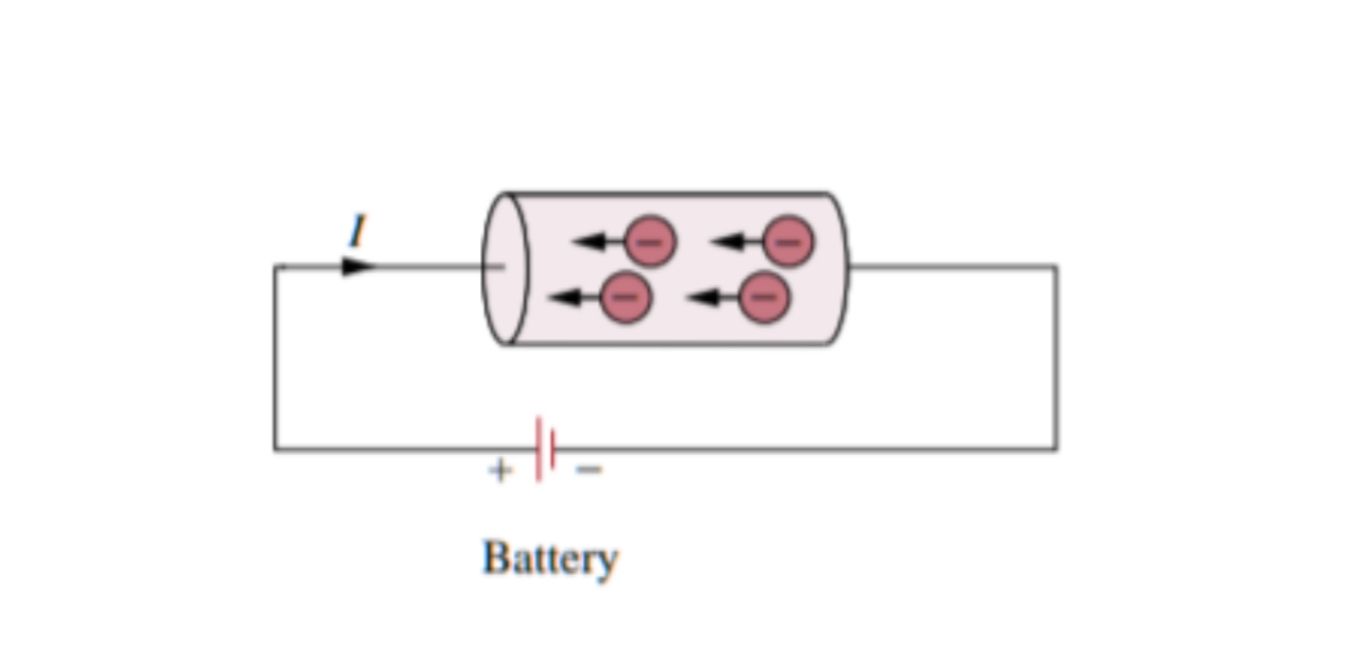What is electric current?
Introduction of Electric Current
In this article, we will discuss what is electric current, the definition of electric current, and all the important concepts related to electric current such as SI unit of electric current, measurement of electric current and effect of electric current, etc.
Now let’s start this article with what is electric current?
We all know that various elements have one or two electrons in their outermost shell and when energy is applied to these elements then the electrons in the outermost shell of the elements become free and these are called free electrons.
When an energy source is applied to these elements then the free electrons move with the speed and constitute an electric current and the direction of movement of electric current is opposite to that of the direction of flow of electrons.
Definition of electric current
Electric current is defined as the rate of flow of positive electric charge. In another word, Electric current is also called the quantity of electric charge transported per unit time.
Electric current is defined by a French mathematician and physicist named Andre-Marie Ampere and he also developed a way to measure electric current in the year 1820.
Let us consider charged particle is exchanged between regions of space M and N then the electric current flowing from M to N is defined as,
i = ∆q/∆t
Where, ∆q = change in the total charge of region N.
Direction of Electric current
Direction of flow electric current is always opposite to that of the direction flow of electrons. Now let us understand the concept of direction electric current in detail below.
According to the concept of convention, electric current flows from the positive terminal to the negative terminal as shown in the figure.

In the figure, we can see that the electrons are moving from the negative terminal to the positive terminal because an electron is negatively charged. As the electrons are negatively charged, they are repelled by the negative terminal of the battery and get attracted by the positive terminal of the battery.
So from the above discussion, we can conclude that the direction of flow of electric current is opposite to that of the direction of flow of electrons.
SI Unit of Electric Current
Si unit of electric is ampere and is denoted by the letter ‘A’. The unit of electric current, the Ampere is named after ‘Andre-Marie Ampere’ who gave a way to measure the electric current in the 1820s.
Ampere is defined as that constant current which when maintained in two straight parallel conductors of infinite length and of negligible circular cross-section area and placed 1 meter apart in a vacuum would produce between them a force equal to 2 × 10-7 N/m.
The above definition is based on the force resulting from the magnetic effect of an electric current. Unfortunately, this definition of ampere has always been hypothetical and not possible to physically achieve in practice.
Then Ampere is redefined in terms of the rate of elementary charged particles (electrons). This definition is achievable scientists are now able to accurately count the passage of individual electrons due to the availability of advanced technology.
Thus ampere is now defined as a current in the direction of the flow of elementary charges (electrons) per second.
One Ampere
If 6.28 × 1018 electrons flow through a point in one second then the quantity of electric current flow is one ampere.
It is important to note that the speed of the electric current is equal to the speed of light.
Effect of Electric Current
There is nothing obvious to indicate the presence of an electric current in a metal conductor or in any other materials. So the presence of an electric current can only be detected by one or more types of the effect produced by that electric current.
When an electric current flows through a conductor then it affects the metal itself and surroundings. There are various types of effects produced by electric current such as heating effect, magnetic effect, chemical effect, gas ionization effect, ray effect, and shock effect.
All the above said types of the effect produced by the electric current are explained in detail below.
Heating Effect
When current flows through a metal conductor then the conductor resists the flows of electric current which causes a rise in the temperature of the conductor, which means the metal gets heated so this phenomenon is called the heating effect of electric current.
This effect is used in electric heaters, electric iron, incandescent lamps, etc. This effect is also responsible for the operation of a fuse as due to excessive-high current, there is a rise in the temperature as the fuse gets melted.
As in this type of effect, there is a transfer of heat from away from the conductor into its surroundings. So we can say that there is a wasteful of energy losses in the heating effect.
Magnetic effect
When electric current flows through a metal conductor then a magnetic field is produced which surrounds the conductor through which electric current passes so this phenomenon is called the magnetic effect of electric current.
The magnetic effect is used in various applications such as to operate a relay, used in electric bell, Motor, Generator, etc. The forces resulting from the interaction between magnetic fields are used to drive motors, operate a relay, etc.
Chemical Effect
When an electric current is passed through a conducting liquid called an electrolyte then that electrolyte gets decomposed into its constituent due to the chemical action. Then this phenomenon is called the chemical effect of electric current.
The chemical effect of electric current is generally used in the process of electrolysis, used in cells or batteries, etc.
Ray Effect
In this effect when an electric current of very high voltage and high frequency is passed through a vacuum tube then due to this a special type of ray is produced called X-ray and this effect is known as ray effect.
The Ray effect is used for various medical purposes such as an x-ray of bones and also used in many more applications.
Gas Ionisation Effect
Whenever current flows through a discharge tube filled with sodium vapor gas, mercury vapor gas, etc. then these gas gets ionized. And this effect is called the gas ionization effect of an electric current.
This effect is mostly used in very high-intensity lighting.
Shock Effect
When electric current flows through the human body it may cause a severe shock or even a death in many cases. This effect is called the shock effect of electric current.
If the electric current is controlled to a specific value then this effect of electric current can be used for the treatment of mental patients by giving light shocks to the brain.
I hope you like this post on ‘what is electric current?. For any doubt and suggestion comment in the comment section below.
